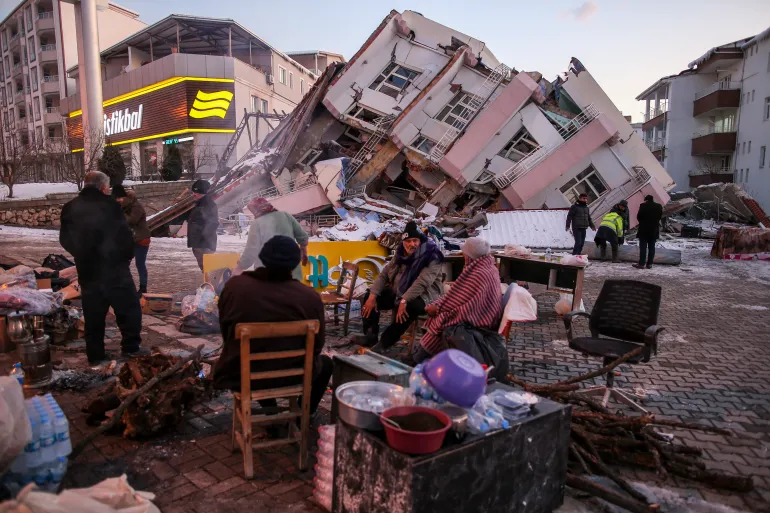Historic structures are relocated in China due to urbanization

In the last twenty years, China’s urban population has more than doubled and aggressive development in the cities was necessary in order to host more people. However, the massive urbanization resulted in thousands of historic sites and buildings being destroyed, to make way for roads and reservoirs. But gradually, instead of demolishing these structures, the practice of relocation began to gain ground, and nowadays it is a common procedure in the Asian country, with a whole industry behind it. The buildings are either disassembled from roof tile to foundation and rebuilt in a new position, or moved to it on rails.
In the last twenty years, China’s urban population has more than doubled and aggressive development in the cities was necessary in order to host more people. However, the massive urbanization resulted in thousands of historic sites and buildings being destroyed, to make way for roads and reservoirs. But gradually, instead of demolishing these structures, the practice of relocation began to gain ground, and nowadays it is a common procedure in the Asian country, with a whole industry behind it. The buildings are either disassembled from roof tile to foundation and rebuilt in a new position, or moved to it on rails.
The practice was inspired by the relocation of the ancient Abu Simbel temples in Egypt in 1964, which had to be moved 656 feet (200 meters) to make way for the construction of the Aswan Dam. ‘That project paved the way for other nations, such as China, to rejig their cultural landscape’, says Hoyin Lee, associate professor in architectural conservation at the University of Hong Kong, ‘and led some people to think that relocation is okay. But we're talking about irreplaceable artifacts’. He also notices that this practice has become China’s national specialty and it is most common since ‘the turn of the millennium’.
Noteworthy examples
One of the first structures to be completely relocated in China was the Jinlun Guild Assembly Hall in Guangzhou, which was built in the early 1700s and was moved 264 feet (80.4 meters) in 2001 to enable a road construction. For the same reason, the Shanghai Concert Hall, built in 1930, was moved in 2003. The building was first raised 5 feet (1.4 meters), was then placed on a pre-made track and slid 218 feet (66.4 meters), and finally raised again by 6 feet (1.88 meters), while a new foundation was constructed under it. In 2013, the 78-year-old 6-storey Zhengguanghe Building was shifted 125 feet (38 meters) to accommodate local redevelopment, being the heaviest structure ever moved. And in 2011, the Hankou Yiyong Fire Association, a historic building in Wuhan, Hubei province, slid 295 feet (90 meters) on a set of rails.
‘‘China is going through a time of major development and people are feeling a conflict between preserving historical buildings and achieving economic growth,’’ Tang Guo-wah, a professor at Guangzhou University's School of Architecture and Urban Planning, said. ‘‘(As a result) we are seeing the incorrect handling of structures like tearing them down, or relocating them’’.
The process
Lan Wuji, founder of a company that specializes in building relocation –one out of dozens-, explains that ‘before a building is lifted, both upper and lower trays (to support the building) are installed, to 'package' the construction and prepare it for the move. There are different approaches to the move itself. Sometimes it slides -- in which case a set of rails need to be built -- and sometimes the structure is pulled by truck-like vehicles’. Lan oversaw the relocation of the Shanghai Concert Hall, before starting his own company in 2004, which now handles numerous projects, of which about half are of historical sites. He believes that ‘relocation has several benefits compared to demolition and rebuilding, as it costs less, it provides a better conservation of the building, it's more environmentally friendly, and it saves time.’ It is hard to say if this is indeed the case since expenses vary wildly between projects, but for an indication of the expenses involved, the Shanghai Concert Hall -a 5,650 tons building- cost $1.3 million to relocate.
The value of historic monuments is being understood
Most experts agree that although relocation is a preferable alternative to demolition, a building's heritage is often bound to its location and it seems that this notion has been gaining ground in recent years. In 2002, the State Administration of Cultural Heritage (SACH) issued the Principles for the Conservation of Heritage Sites in China (the "China Principles") – not legally binding guidelines which however state that "intervention to a heritage site should be restricted to the minimum necessary to ensure its preservation". In 2015, the government released "An Emergency Notice on Firmly Banning the Relocation of Traditional Buildings, and Following the Laws Against Theft of Components", again not a law, but ‘a clarification of the enforcement of existing laws to prevent the illegal demolition and 'theft' of cultural heritage properties’ according to Lee. And in 2016, the Chinese Society of Cultural Relics and the Architectural Society of China published its 20th Century Chinese Architectural Heritage List, naming 98 buildings worthy of preservation. As a result of all these, ‘Any transplantation and business (in relation to) historic structures in China will be strictly controlled, and happening less and less’, according to Chang Qing, the head of Tongji University's Department of Architecture.



Source: CNN
Want to read more like this story?

38% fewer skyscrapers constructed in China this year
Dec, 27, 2019 | NewsAccording to a new study, issued by the Council on Tall Buildings and Urban Habitat (CTBUH), Ch...

A four-storey building collapsed after efforts to rectify its imbalance in South Kolkata
Jan, 15, 2025 | NewsOn Tuesday January 14 around 3:05 p.m. local time a four-storey building gave way and fell onto a o...

Building collapse in Shanghai: At least 5 casualties
May, 17, 2019 | NewsAt least 5 people were reported dead after a commercial building collapsed in Shanghai on Thursday,...

Experts answer: “Why did so many buildings collapse in Turkey?”
Feb, 06, 2023 | NewsFollowing Monday's terrible earthquakes, many of people are reportedly still trapped in the rubble...

2015’s Tallest Buildings
Dec, 02, 2014 | NewsCNN recently compiled a list of the world’s tallest buildings scheduled for completion in 2015. The...

27 Dead in Two India Building Collapses
Jul, 01, 2014 | NewsTwo deadly building collapses occurred in India this past weekend claiming the lives of 27 people. T...

Property owner Wanted to Save Rhode Island’s Tallest Building
Feb, 11, 2014 | NewsThe owner of Rhode Island’s tallest building renewed his effort on Monday to gain support for a publ...

19 buildings demolished at once in Central China (video)
Jan, 27, 2017 | NewsTo make way for a new business district in the city of Wuhan (formerly known as Hankou) in Central C...

Finland: Demolition of older buildings harms both the environment and the economy
May, 22, 2024 | NewsThe rate of building demolitions in Finland has nearly doubled in just ten years, despite evidence...
Trending

Spectacular interchanges around the world

New Release - STAAD.Pro 2024 - 2

ADINA 2025 for Structural WorkSuite

ADINA 2025 New Release!

Concrete Buildings as Rechargeable Batteries

Powerful earthquake shakes central Philippines, dozens killed

Indonesia school collapse: three fatalities and dozens injured

